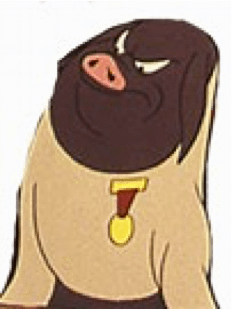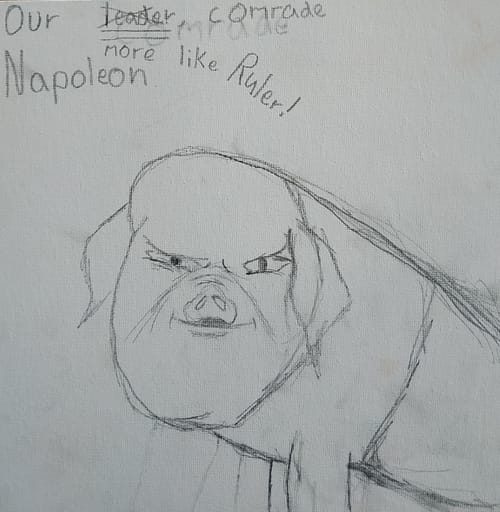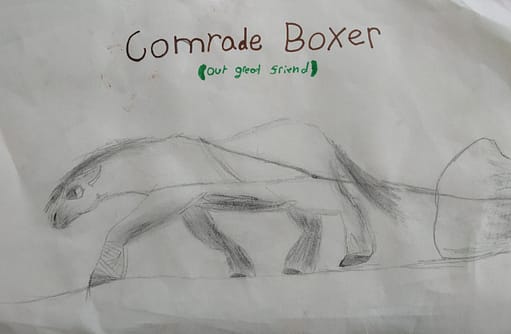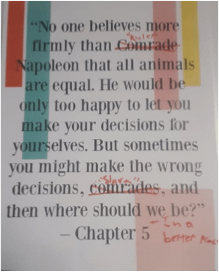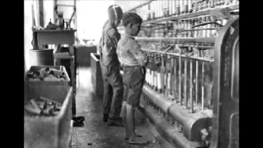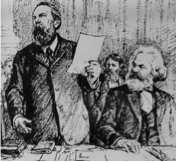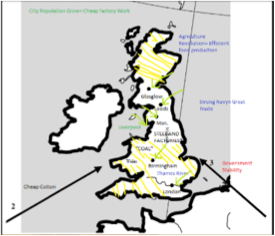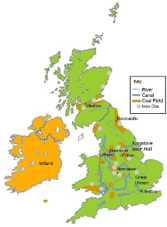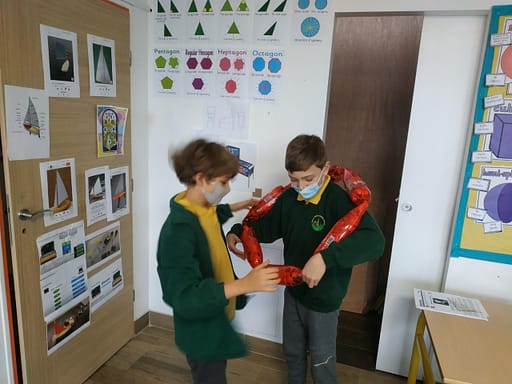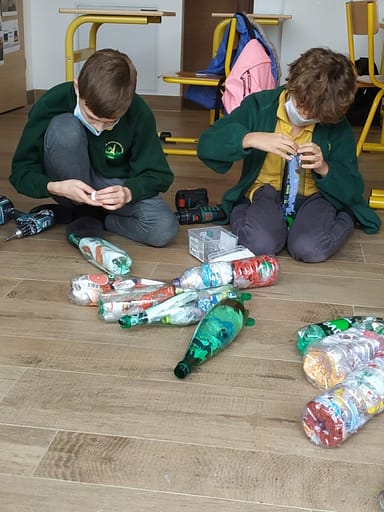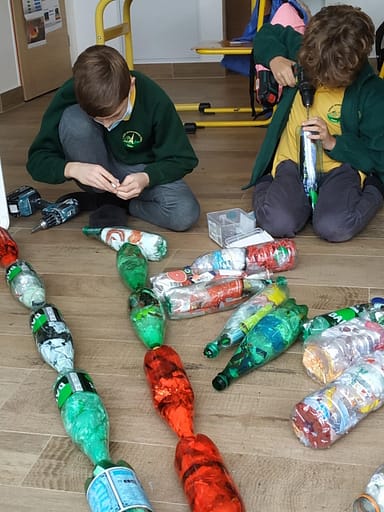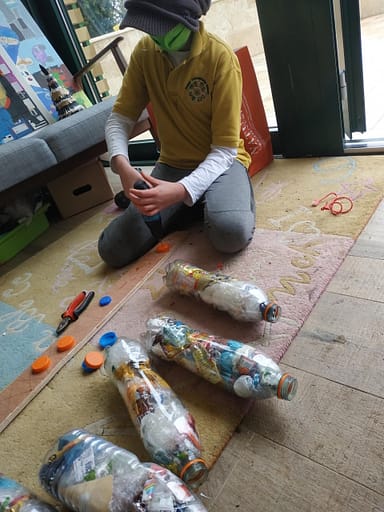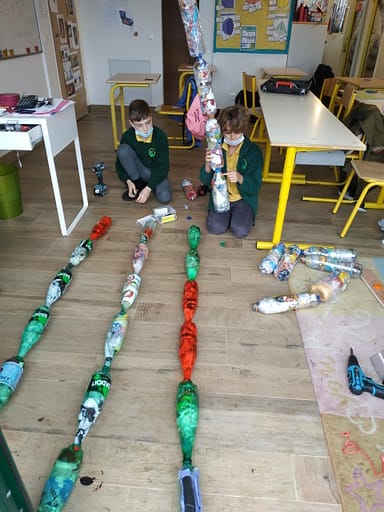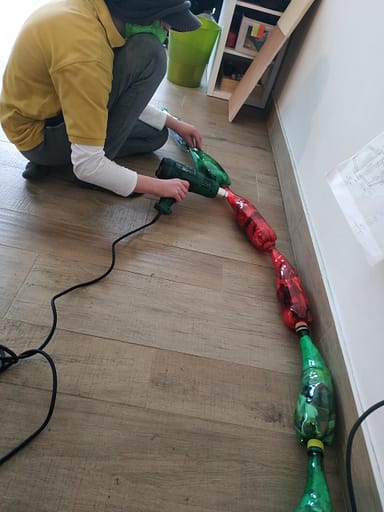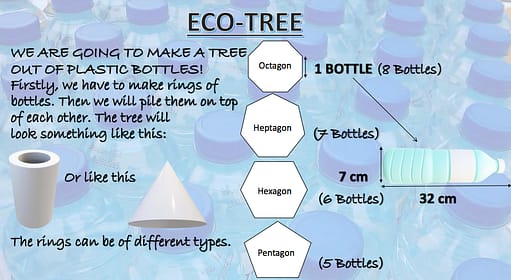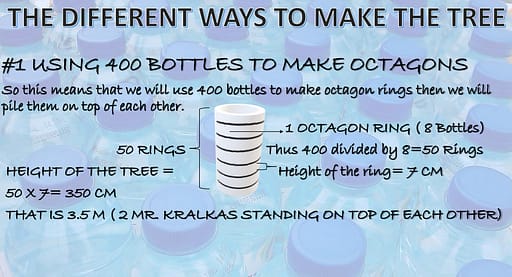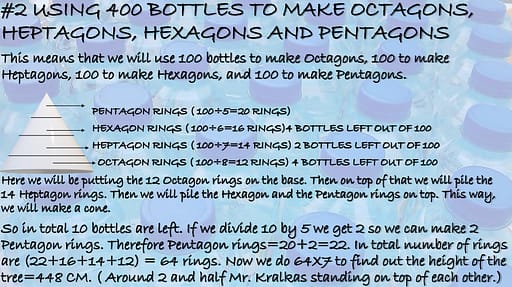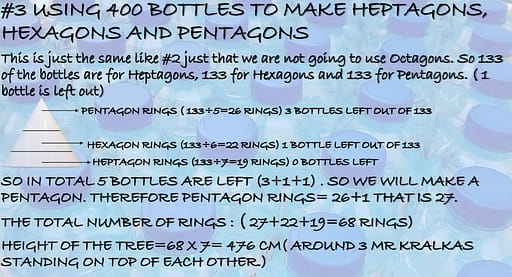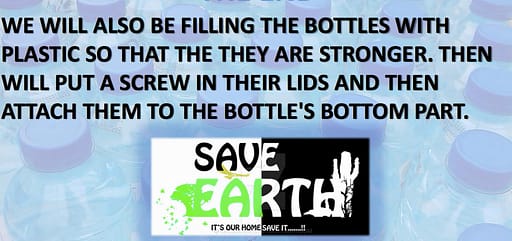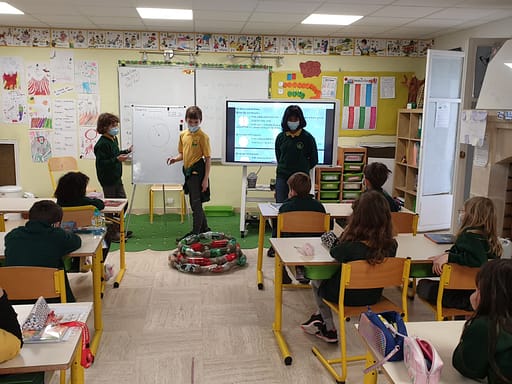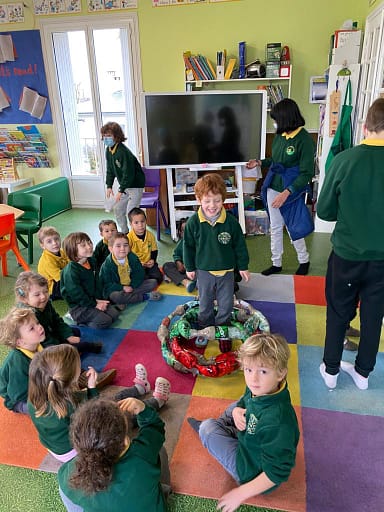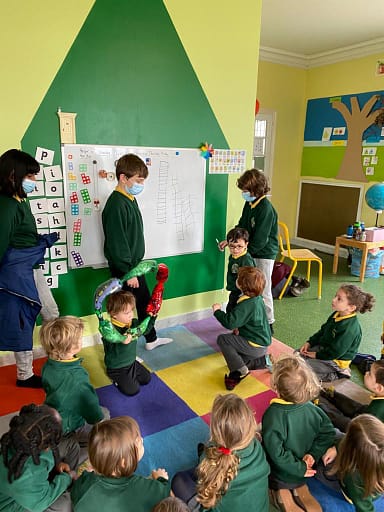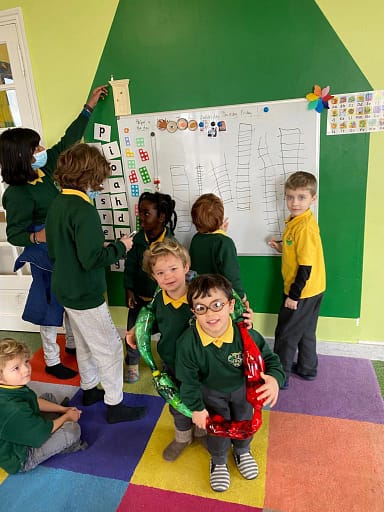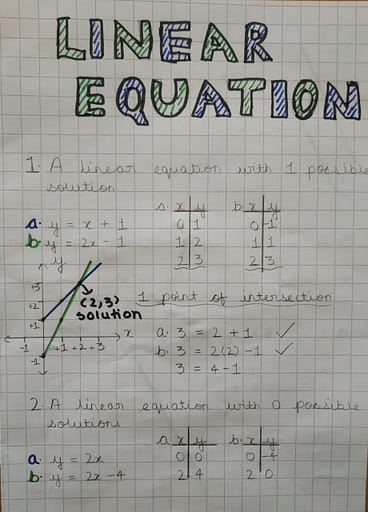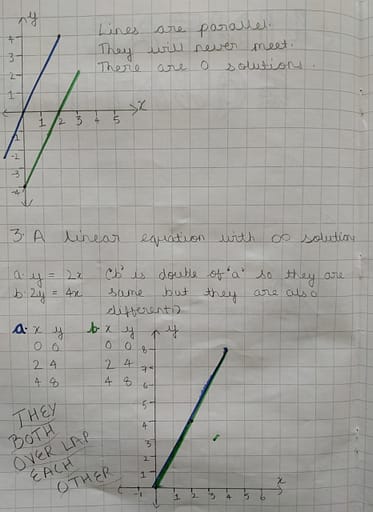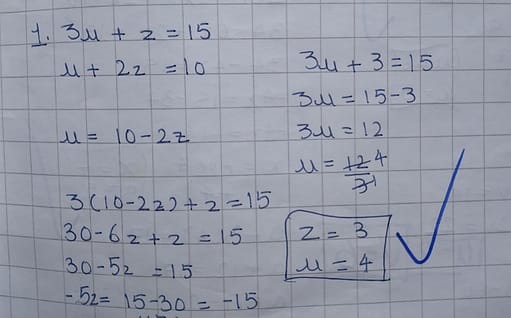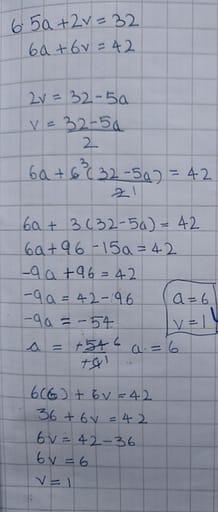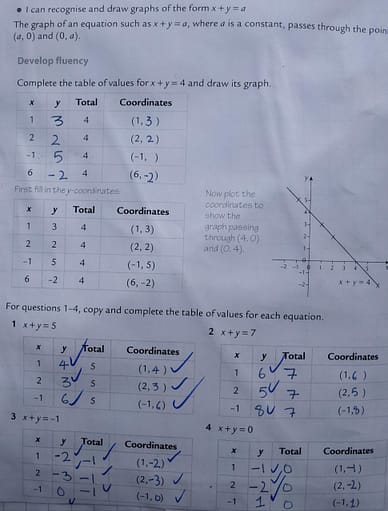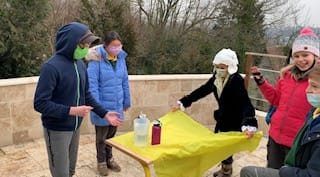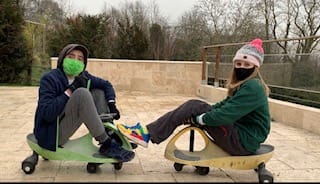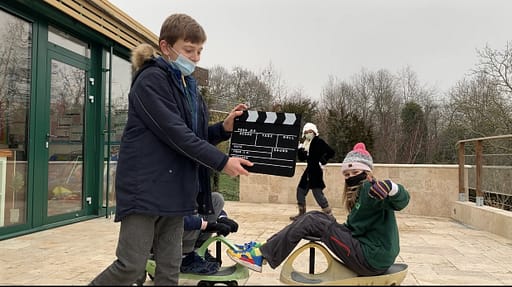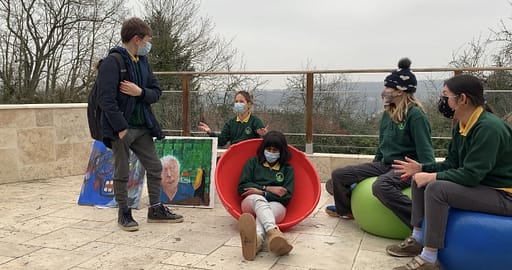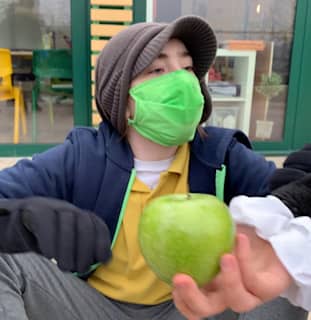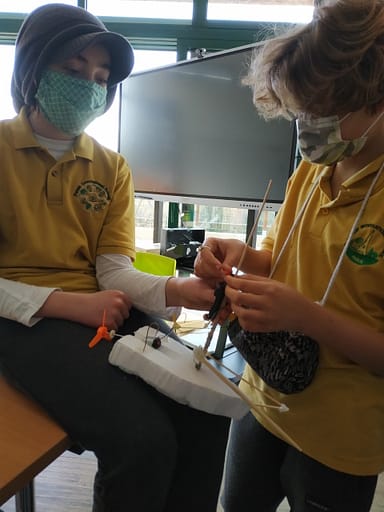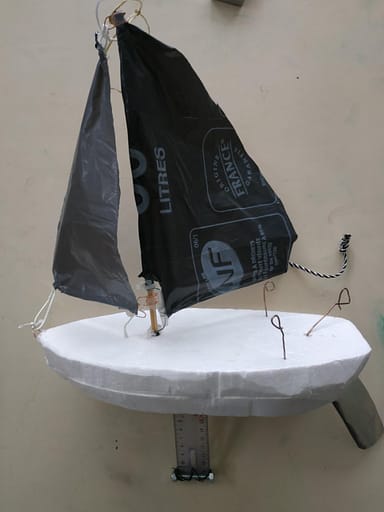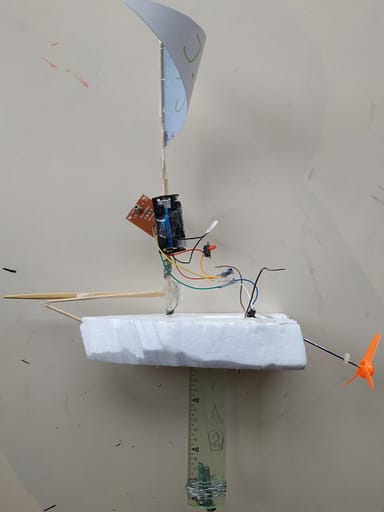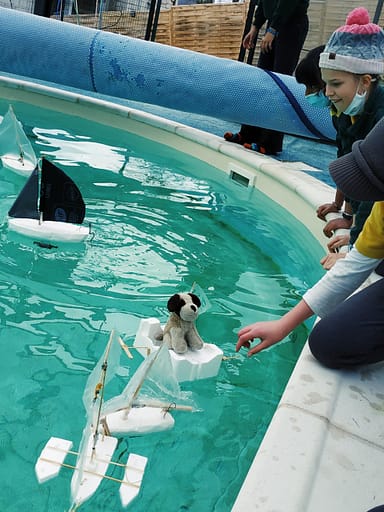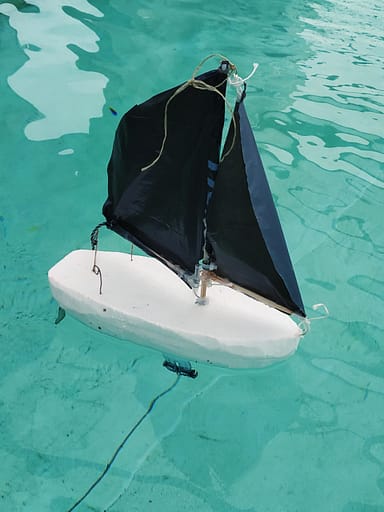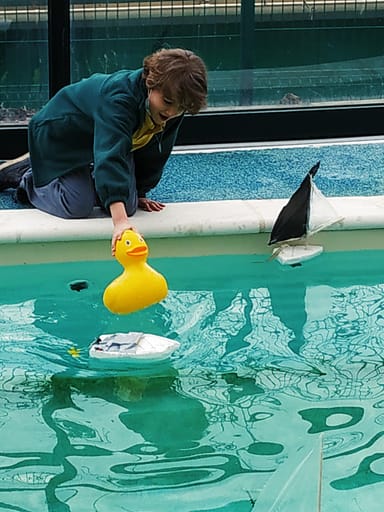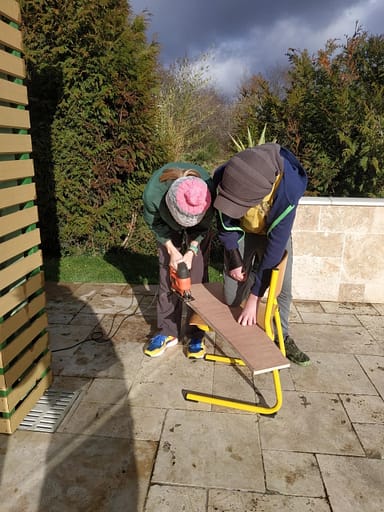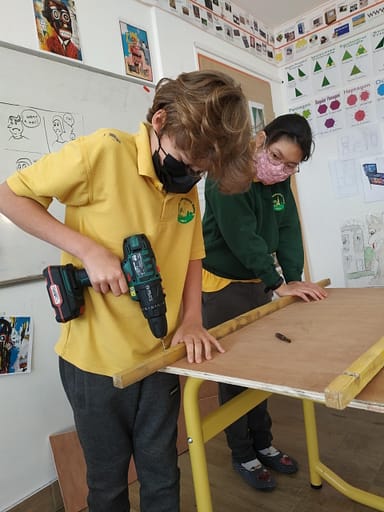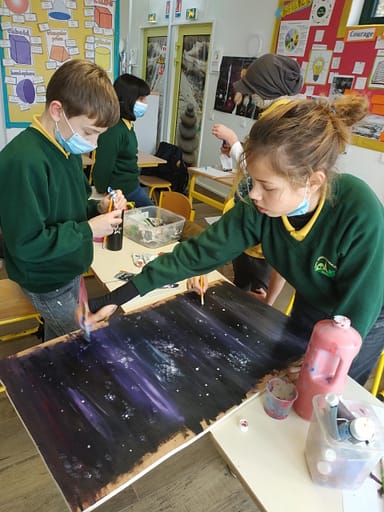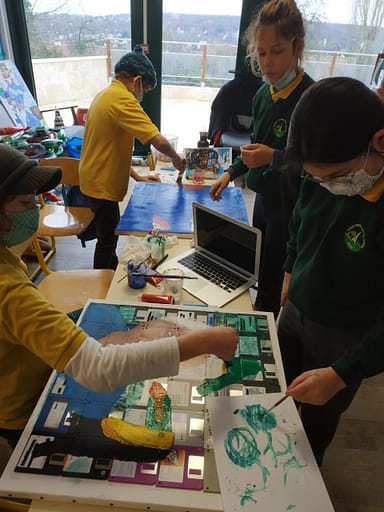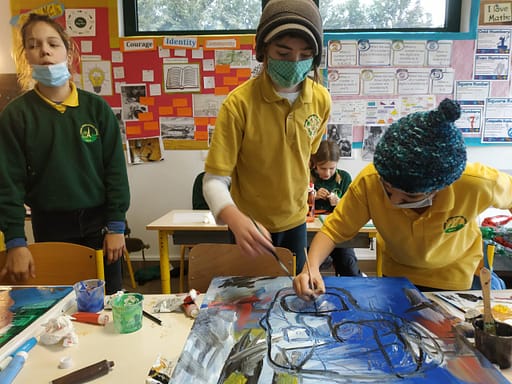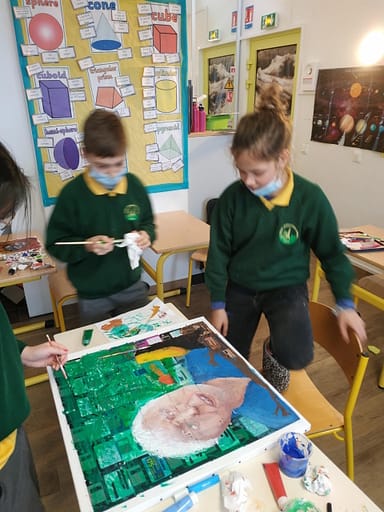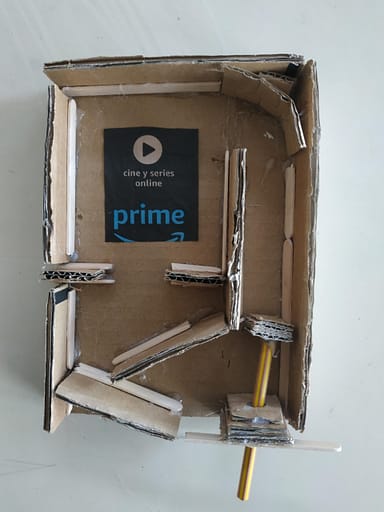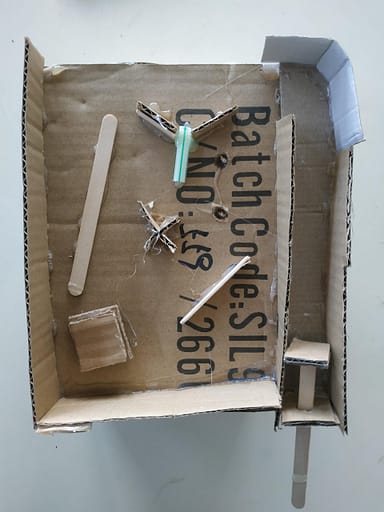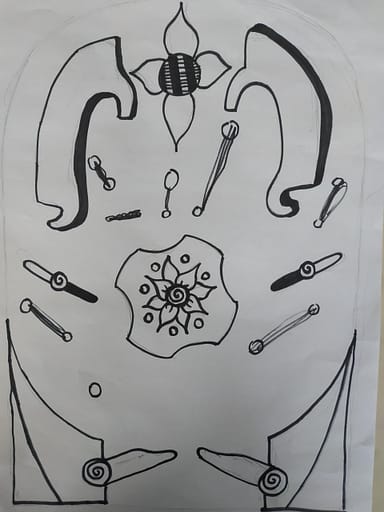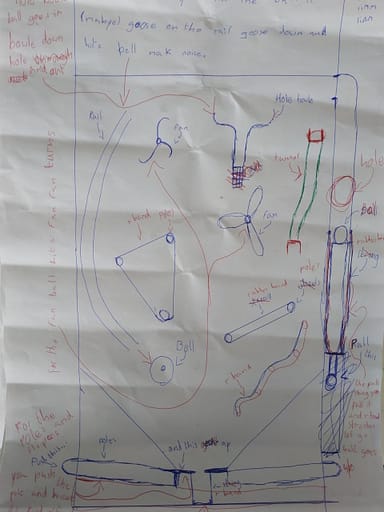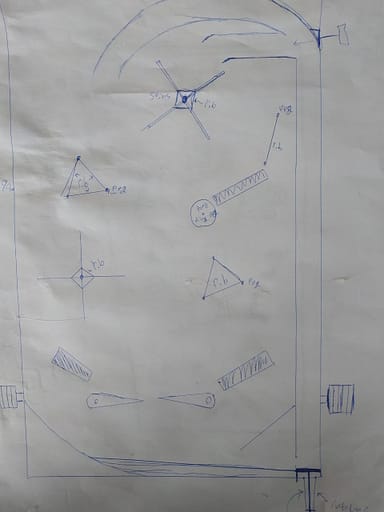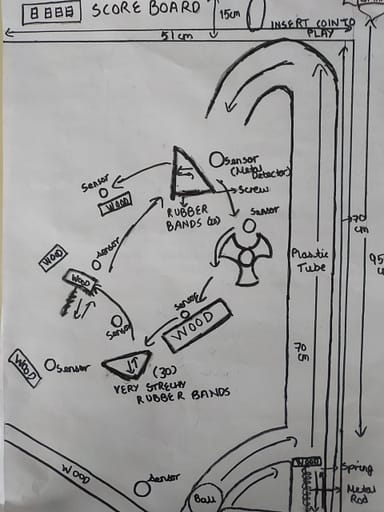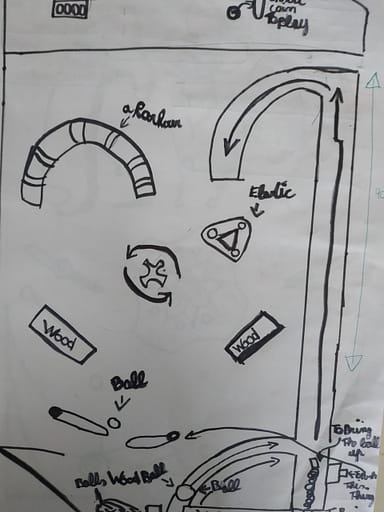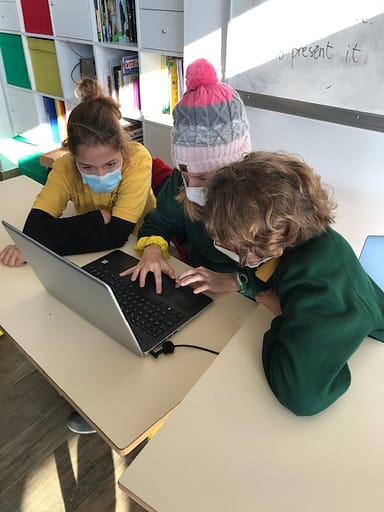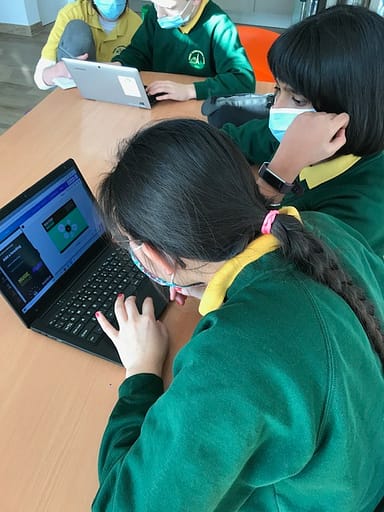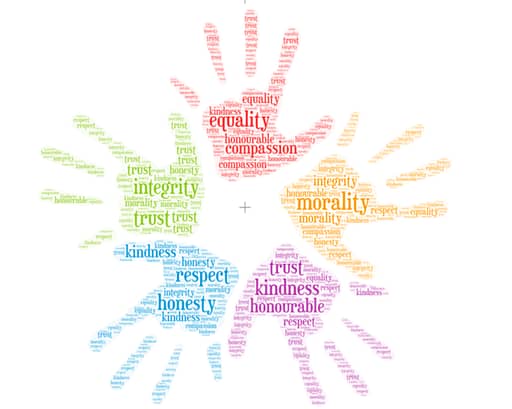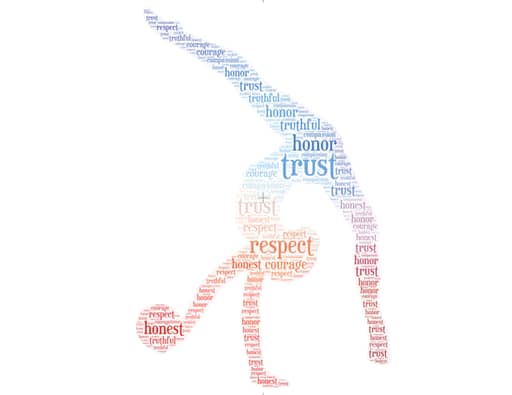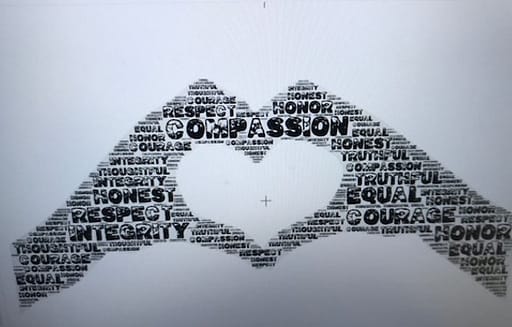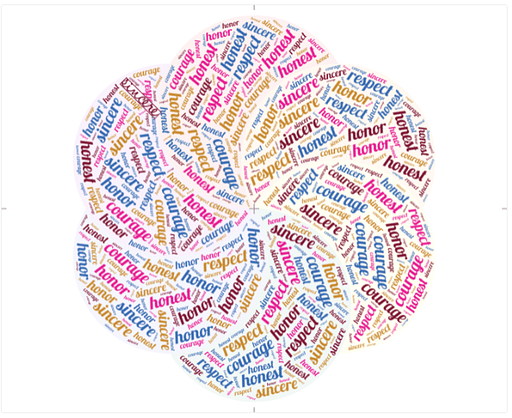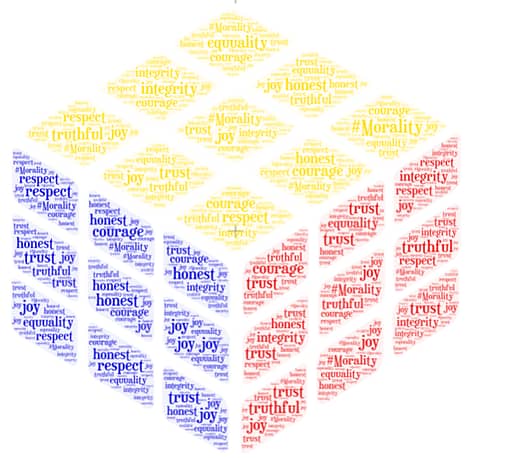Literacy
This term Elm read George Orwell’s Animal Farm. They followed the events of the animals’ liberation and subsequent subjugation with interest, sadness and indignation. They observed how the literate animals very quickly exerted influence over the less educated and able and how greed and selfishness destroyed the dream of sharing and equality. e made the connection between the animals in the story and the real people and events they represent. We learned also about the difficulty George Orwell had in getting a publisher to print the book, considered controversial during a time when Britain needed Russia as an ally against Germany.
Allegory/Political Satire
“Some animals are more equal than others.”
Elm dabbled with a bit of political graffiti
Elm have been following the progress of the Vendée Globe and have put together a newsletter on this most exciting yacht race that takes place every four years.
Presentation by ELM CLASS
In addition, we have been looking at the differences between formal and informal language, and the different situations in which we use them.
History
In History this term Elm looked at the role of competition in business and the economy. They observed global giant Apple and noted that its products are not made in the US but in China. Why? To benefit from cheaper labour and to keep profits high and costs low. They learned about the working conditions of the people in the Apple factories, their low pay and long hours. All this to set the scene for the Industrial Revolution in 18th century England.
Elm learned that prior to the mid-1700s England was a rural society with most people living in small villages and towns. They learned about the innovations in the weaving industry that ended the skilled handcraft industries of agricultural England and led to migration out of the countryside into rapidly growing cities. They then studied the terrible living and working conditions of the poor and the exploitation that led Karl Marx and Friedrich Engels to write the Communist Manifesto.
Geography
In Geography we looked at why certain regions developed rather than others, looking at natural resources such as coal and iron ore. We looked at the rivers and the network of canals built to transport materials to the burgeoning industrial cities.
“E-baobab” project
We discussed very important environmental issues and tried to do our part to make our world a better place. We shared our ideas on why and how people use and waste plastic and don’t even think that they harm our environment. There is a lot of Mathematics in growing trees, especially if they made out of plastic! On our “eco-friendly / e-baobab” mission we estimated, calculated, measured and looked at the different possible solutions for “growing” our tree. We experimented with the pentagonal, hexagonal, heptagonal and octagonal rings in order to construct the separate layers of our solid plastic tree. The children then rolled up their sleeves, used collected plastic/plastic bottles and created their own ‘ECO-BRICKS’. We practiced presenting our findings in front of our peers and then adapted the speech accordingly for the younger audiences.
If you had 400 plastic bottles, what rings would you use for your tree?
How high would it be? How would you arrange them?
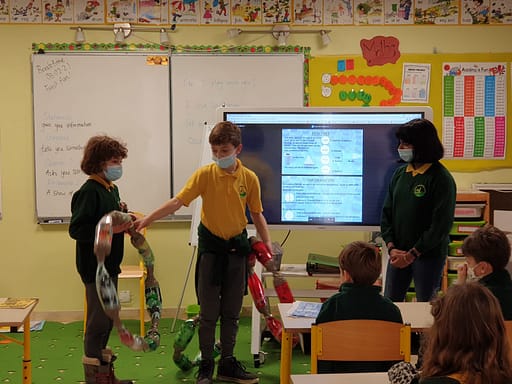
Teaching Birch and Walnut Classes how to use the basic 2D shapes in our E-baobab construction. Adapting the language to the audience, explaining our method and important construction steps.
If you would like to build your own E-Baobab tree, all calculations are provided. Save the planet! Make that big difference! “Mathematical calculations by Roger, Uttara and Jean. Presentation by Uttara.
Mathematics
Algebra: Expressions /Formulae/ System of equations
We worked on simplifying algebraic expressions, used simple formulae and wrote formulae from the problem to identify how they could be applied in real life. Elms practiced plotting straight line graphs while carefully building the table of values for the equations. We also built, analysed and interpreted real-life graphs. We worked on solving problems while substituting specific values into expressions and formulae and then further dived into algebra while finding solutions for the systems of equations.
Science
FORCE, ENERGY and WORK
We solved various problems to find out how FORCE, ENERGY and WORK are related. We looked into the three laws of motions and then reenacted the experiments that were later used in our film. The children designed their own experiments with the travelling objects that can or cannot change their speed in different conditions. We calculated the average speed and the acceleration of an object and then tested, compared and calculated unknown variables. The children formulated hypotheses, practiced planning their investigations and made predictions. After carrying out their investigations they made accurate measurements to gather data to test their hypotheses. They identified patterns in the results and drew conclusions based on the evidence. On a few occasions they had to retest their findings and suggest ways in which their investigations and working methods could be improved.
“Newton’s Laws of Motion” – Directed and edited by Joshua Fisher
“Three Laws of Motion” – RAP- Dedicated to Sir Isaac Newton by Elm Class
What is all this commotion?
About the 3 laws of motion,
If you need a solution,
Just ask Isaac Newton!
Who is Isaac Newton?
And why do I care?
All that I know,
Is that he had grey hair.
So who is this Newton,
And what did he do?
Is it this guy with the toucan,
Whose shirt is quite blue?
Or is it this artist who painted the crown?
Or am I being such a big clown?
Pretty please tell me now,
I heard it was sold for 80 million pounds.
The first law states,
The objects’ fate.
The exact words,
Are for the nerds.
The objects in rest,
Will remain at rest.
And the objects in motion,
Will remain in motion.
They call it Inertia,
But what could it be?
Look back at the previous verse,
And then you will see.
Second law of motion,
All that comes with it.
Objects’ mass times the acceleration,
To find the force put out upon it.
The third law of motion clearly states,
For every action there is an opposite reaction.
How birds fly in the sky?
Because if they fell, they would surely die.
Vendee Globe/ Remote control Boats
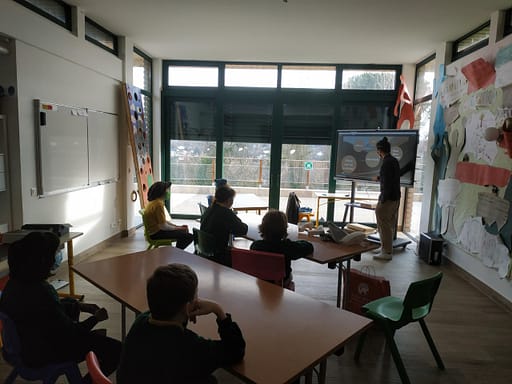
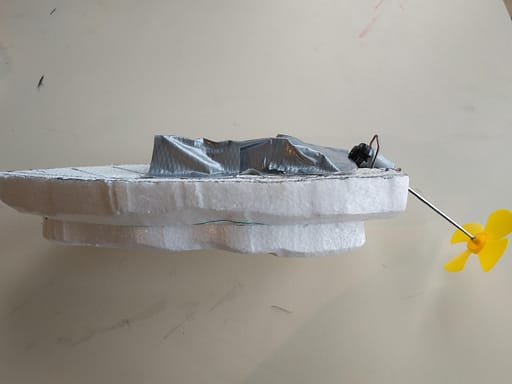
For those that do care,
And want to see.
There are some boats,
That sail at sea.
Remote control boats,
And free sailing yachts.
Thanks to the Buoyancy,
They are staying afloat.
We used some recycled materials,
And nothing was bought.
Sailing is quite challenging,
And not as easy as we thought.
ART/Design and Technology
Pinball Machine construction project and recycled material art
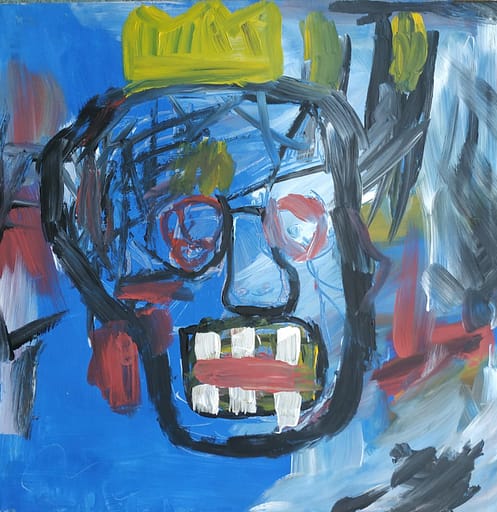
Collaborative art-Jean Michele Basquiat – “Skull” 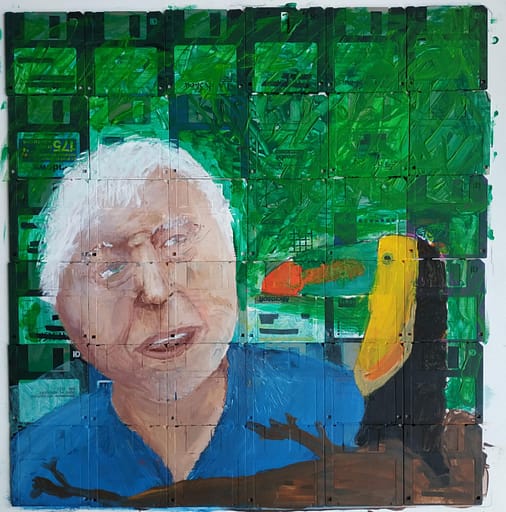
Collaborative art- “David Attenborough + toucan”
Design/ Plan/ Estimate/ Measure/ Cut/Drill/ Attach/ Check/ Fix
It does not fit!!! What did I do wrong?? How do I correct my mistake??? I can do this!!!
The children also used standard measuring units while working on measuring length. We worked on estimating, measuring, cutting and hammering our wooden materials for our Pinball Machine. It was evident for the children to spot their mistakes and realise where they went wrong. We could clearly see why it is important to measure and remeasure and only then cut it once.
Pinball Machine: Blue prints and 3D models/ mechanism
ICT
In ICT lessons we have been learning about hardware and software components that make up computer systems. We learnt how instructions are stored and executed within a computer system and discovered a range of ways to use technology safely, respectfully, responsibly and securely, including how to protect our online identity and privacy.
Goals that have been achieved during this term:
– Understanding the hardware and software components that make up computer systems, and how they communicate with one another and with other systems.
– Knowing how to use the technology safety, which includes gaining knowledge about viruses and how to avoid them.
In order to have an overview of all this information, we created mind maps about viruses, by using an online software called Canva.
– Being able to recognise inappropriate content and knowing how to report it.
– Understanding how to protect your online identity and privacy by role playing, placing them in real context and situations.
Based on the cross-curricular approach, which develops our skills and knowledge through interconnected topics, we created calligrams about morality, as well as, e-books about IPC themes (cooperation, communication, thoughtfulness, adaptability, resilience) in order to present them to Birch and Walnut class.
In order to enrich our creations, we used the augmented reality on the characters of our stories.
Walnut and Birch class experienced an authentic 3-D illustration.
Spanish
During this term, Elm students have been introduced to the following contents:
Vocabular:
-classroom objects: identify and name them (lápiz, pizarra, profesora, bolígrafo, libreta, libro, pegamento,…).
– the weather (¿ Qué tiempo hace hoy?, including the season of the year).
– the days of the week (¿Qué día de la semana es hoy?, ¿ Qué día de la semana fue ayer/será mañana?).
-family (madre/padre, tío/tía, primo/prima, sobrino/sobrina, hermano/hermana) and farm animals.
Grammar:
-singular and plural (ad -es or -s, depending on the ending of the word).
-male and female (including articles: el/la/los/las).
– how to make short sentences (subject, predicate, verb and verb complements).
-to translate into Spanish, English sentences (and the other way round, including vocabulary seen).
-adjectives, which we have applied to the vocabulary already seen (el perro grande, el conejo saltarín, el caballo marron).
Speaking:
-answering and asking questions related to objects (¿Cómo es esta mesa?, ¿Cómo es esta casa?).
-to introduce themselves (Hola me llamo…. Tengo …. Años y estoy…).
-to introduce someone.
Writing:
-Descriptions
-Dictation to review vocabulary and grammar


